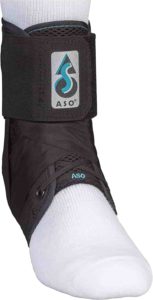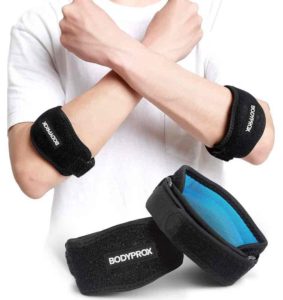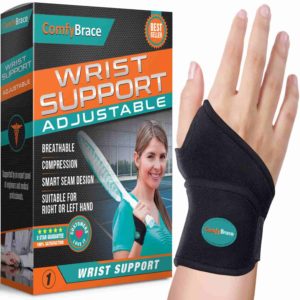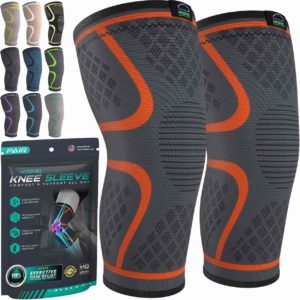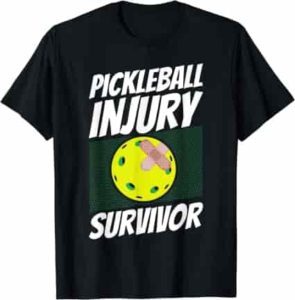Introduction
Pickleball is a racquet sport that originated in the United States in 1965. It quickly gained popularity due to its easy-to-learn rules and low-impact nature, making it a perfect option for all ages and abilities. The game is played on a court that is similar in size to a badminton court, with a net that’s lower than a tennis net.
In recent years, pickleball has seen an unprecedented surge in popularity.
According to the Sports & Fitness Industry Association (SFIA), participation in pickleball grew by 21% between 2018 and 2019 alone. This growth can be attributed to several factors, including its accessibility, social nature, and ability to provide players with ample physical activity without overly stressing their bodies. Despite its gentle reputation, however, pickleball players are still at risk for injuries–like any other sport or activity. As such, it’s important for players of all levels to take injury prevention seriously if they want to enjoy the game fully.
What is Pickleball?
Pickleball is an easy-to-learn racquet sport that has grown exponentially popular over the years. The game can be played either indoors or outdoors on courts that are similar in size to those used for badminton–with one key difference: they have lower nets than standard tennis nets! In addition to this unique feature of the court setup, pickleball also involves hitting a perforated plastic ball back and forth across the net using paddles–a bit like ping pong but on a larger scale!
Its low-impact nature makes it an excellent choice for people of all ages who want something fun and active without putting undue stress on their bodies. It’s a highly social game, too, which is part of what makes it so appealing for many players.
Growing Popularity of Pickleball
Pickleball’s popularity has been on the rise since it was first invented in the mid-1960s. Part of this can be attributed to its accessibility–players don’t need to be particularly skilled or athletic to pick up the game quickly.
Its low-impact nature also makes it an attractive option for people who want to stay active without putting undue stress on their joints. But there are other factors at play as well. For one, pickleball is an incredibly social sport–the small court size and slower pace make it easy for players to chat and interact during games. It’s also a very affordable sport to play since all that’s required are paddles, balls, and a net.
The Importance of Injury Prevention
While pickleball may seem gentle compared to more high-intensity sports like basketball or running, injuries can still happen–especially if players don’t take proper precautions or overexert themselves during games. Injuries commonly seen in pickleball include ankle sprains and strains, shoulder injuries, and tennis elbow (a type of repetitive strain injury). But these injuries can often be prevented by taking measures like wearing appropriate footwear with good support and traction, properly stretching before playing, using correct form when hitting the ball with your paddle–and knowing your limits when it comes to how much you exert yourself during games.
Common Pickleball Injuries
Pickleball is a relatively safe sport, but like any physical activity, it carries the risk of injury. The most common injuries in pickleball are ankle sprains and strains, shoulder injuries, and tennis elbow. These injuries can range from mild to severe and can greatly impact a player’s ability to enjoy the game. It is important for players to understand how these injuries occur, how to prevent them, and how to treat them if they do occur.
Ankle Sprains and Strains
Ankle sprains and strains are the most frequent injury that occurs during pickleball. This type of injury happens when the foot turns inward or outward suddenly during movement or when landing from a jumping shot causing the ligaments surrounding the ankle joint to stretch or tear.
Symptoms are typically:
pain, swelling or bruising in the ankle area.
Prevention tips include:
wearing appropriate footwear designed for court sports (tennis shoes) with non-slippery soles that provide proper ankle support
warming up before playing by stretching leg muscles
taping your ankles before playing
avoiding quick directional change movements that could lead to an awkward landing on your feet.
Treatment includes R.I.C.E (rest, ice compression & elevation); over-the-counter anti-inflammatory medication (if needed), wearing an ankle brace for better support; starting light exercises as part of a physical therapy plan once pain has subsided.
Shoulder Injuries
Shoulder injuries often occur from repetitive overhead movements such as serving or returning high shots during Pickleball games. Common symptoms include:
pain while lifting objects above shoulder level or behind back with difficulty raising arms laterally & forward.
Prevention involves:
strengthening your rotator cuffs with resistance band exercises for better muscle balance
proper warm-up routine before playing pickleball matches such as arm circles away from your body while standing straight.
Treatment includes rest and avoidance of overhead movements using ice, gentle exercises to regain lost strength, and physical therapy if needed. I have personally had two shoulder surgeries from tennis injuries so I know how frustrating this injury can be. My best advice, do everything you possible can to get your shoulder feeling better and only use surgery as a last resort.
Tennis Elbow
Pickleball elbow is another common injury in pickleball. It is caused by a repetitive strain injury to the tendons in the forearm that attach to the elbow joint. The symptoms include sharp pain in or near the elbow and a weak grip strength.
Prevention methods include:
proper technique when gripping the paddle
avoiding overuse of the affected arm
stretching forearm muscles before playing
using an elbow strap for better support.
Treatment includes:
rest and avoidance of overhead movements
using ice & anti-inflammatory medication if required
wearing an elbow brace for better support on and off the court
strengthening exercises (e.g., wrist flexion) prescribed by physiotherapists.
Wrist Injuries in Pickleball: "The Unsung Villain of the Game"
Wrist injuries are a common occurrence in pickleball, resulting from the repetitive motion and explosive movements required by this fast-paced game. They can be caused by overuse, improper technique, lack of warm-up or cool-down routines, and insufficient conditioning.
Symptoms can include:
pain, swelling, stiffness
reduced range of motion and grip strength
Prevention is key when it comes to wrist injuries on the court.
Players should focus on warming up properly with stretching and strengthening exercises targeting the wrist muscles before engaging in a match. It’s also essential to wear proper gear such as supportive wrist braces to reduce stress on the joints.
Treatment options for wrist injuries include:
rest, ice, compression methods like wrapping or bracing
medications like anti-inflammatory drugs.
In severe cases that don’t respond to conservative treatments like these ones mentioned above, physiotherapy could be necessary.
Knee Injuries in Pickleball: "The Knee's Struggle is Real"
Knee injuries are common among pickleball players because they are exposed to high-impact forces while playing. These types of injuries can be caused by twisting and turning motions during play or landing awkwardly after a sprint or jump.
Symptoms may include:
pain around the knee joint area
swelling or stiffness.
Preventing knee injuries requires focused efforts both on and off-court.
Warming up with dynamic stretches will help get your muscles ready for action while off-court strengthening exercises will build up muscle endurance crucial for reducing knee injury risk.
Treatment options for knee injuries range from conservative measures such as RICE (Rest Ice Compression Elevation) protocol coupled with physical therapy sessions focused on improving mobility and strength around the joint area to surgical intervention needed in certain cases.
Back Injuries in Pickleball: "The Silent Killer"
Back injuries can be caused by the explosive movements, sudden stops, and quick turns required in pickleball. With a player’s back taking constant pressure during gameplay, it’s not surprising that back injuries are very common among pickleball players. Symptoms of these injuries may include sharp pain in the lower or upper spine area, stiffness, or reduced mobility.
Preventing back injuries requires proper conditioning and stretching before engaging in gameplay. Players should also focus on increasing their core strength through targeted exercises to help support their backs during play.
Treatment options for back injuries include rest, pain management therapies like massage or chiropractic sessions as well as physical therapy sessions focused on strengthening the muscles around the spine area. In chronic cases where conservative measures fail to relieve symptoms, surgery could be an option to explore.
The Role of Overuse in Pickleball Injuries
Overuse injuries are common in pickleball due to the repetitive nature of the game. These injuries occur when a particular body part is subjected to repeated stress without adequate time to heal and recover. Overuse can lead to conditions like pickleball elbow, knee strains, and plantar fasciitis. It’s important to understand the role of overuse in pickleball injuries to prevent them effectively.
Preventing Pickleball Injuries
Prevention is key when it comes to pickleball injuries. This includes proper warm-up and cool-down routines, using the correct technique and equipment, and ensuring regular rest and recovery. For instance, a good warm-up can prepare your muscles for the game, reducing the risk of strains and sprains. Similarly, using a paddle with the right grip size can prevent conditions like pickleball elbow and wrist tendonitis.
Treating Pickleball Injuries
Despite best prevention efforts, injuries can still occur. Knowing how to treat common pickleball injuries can help speed up recovery and prevent further damage. This includes first aid measures like rest, ice, compression, and elevation (RICE). However, for more serious injuries like fractures or severe sprains, it’s important to seek professional help.
The Psychological Impact of Pickleball Injuries
Pickleball injuries can have a significant psychological impact, leading to frustration, anxiety, and even depression in some cases. It’s important to address these psychological aspects as part of a comprehensive approach to injury recovery.
The Financial Cost of Treating Pickleball Injuries
Treating pickleball injuries can be costly, especially for more serious conditions like fractures or ligamentous injuries. This underscores the importance of injury prevention and having adequate health insurance coverage.
Returning to Pickleball After an Injury
Returning to pickleball after an injury should be a gradual process. Following safe return-to-play guidelines and engaging in rehabilitation exercises and physiotherapy can help ensure a successful comeback. For example, strengthening exercises can help rebuild muscles after a calf strain, while balance exercises can help prevent future ankle sprains.
Injury Statistics Amoung Different Age Groups
Pickleball is a sport enjoyed by people of all ages, but this doesn’t mean the same risks apply to everyone. According to a study published in the Journal of Athletic Training, players over 50 years old have a higher risk of injury than younger players. The study found that 42% of injuries occurred in those aged 50-59, while those aged 30-39 only accounted for 3.4% of injuries.
In addition, women are more likely to suffer from ankle sprains and men are more likely to have shoulder injuries. This is due to differences in anatomical structure and playing style between genders. (this is just what the article claims) It’s important for players to be aware of these statistics and take appropriate measures to prevent injury. This includes proper warm-up and stretching routines before playing, using protective gear such as ankle braces or shoulder supports if necessary, and modifying playing style or intensity if needed.
The Role of Equipment in Preventing Injuries
While proper technique and conditioning play a big role in injury prevention, equipment can also make a significant difference in reducing the risk of injury. One key piece of equipment is shoes – having tennis shoes with good grip can prevent slips on the court which can lead to ankle sprains or other injuries. Another important piece is paddles – choosing the right weight and size can help reduce strain on the shoulder and elbow joints during play.
Additionally, wrist straps or supports can provide added stability during shots that involve twisting motions. Other pieces of equipment include knee pads for added protection against impact with the ground during falls, as well as sunglasses or hats for sun protection during outdoor matches.
The Impact of Playing Surface on Injury Risk
The type of surface you play pickleball on can also affect your risk for injury. Hard surfaces like concrete or asphalt tend to be more unforgiving when it comes to falls, increasing the risk of fractures or head injuries. It’s generally tougher on the joints pounding your feet on concrete. On the other hand, softer surfaces like indoor gym floors or clay courts can be more forgiving. (even though we all know playing on gym floors kind of sucks)
Weather conditions can also play a role – rainy or damp conditions can make surfaces more slippery, while extreme heat or cold can affect performance and increase injury risk as players may not be adequately prepared for the weather. It’s important to take into account playing surface and weather conditions when choosing where and when to play pickleball.
This may mean opting for indoor courts during inclement weather, or choosing to wear extra layers in colder temperatures. Additionally, it’s important to maintain proper court maintenance and repair any uneven areas that could increase the risk of falls.
Conclusion
Pickleball is a sport that requires quick movements and rapid changes in direction, which can put players at risk for several types of injuries. Ankle sprains and strains, shoulder injuries, tennis elbow, wrist injuries, knee injuries, and back injuries are some of the most common pickleball-related ailments. To minimize the risk of injury while playing pickleball, it’s important to stay in good physical condition by doing regular strength-training exercises. Doing simple things such as stretching before you go to sleep is a great night time routine that can have serious long term benefits!
Seeking Medical Attention for Serious Injuries
While many pickleball-related injuries can be treated at home with rest, ice, compression, and elevation (RICE), more severe ones may require medical attention. If you experience any symptoms such as severe pain or swelling after playing pickleball or if you have a history of joint issues or other medical conditions that make you more vulnerable to injury, it’s important to see a doctor who specializes in sports medicine.
Final Thoughts on Staying Safe While Enjoying the Game of Pickleball
Playing pickleball can be a fun way to stay active and socialize with others. However, it’s important to take precautions to avoid injury so that you can continue playing without interruption.
Some additional tips for staying safe while enjoying the game of pickleball include warming up properly before playing by doing stretching exercises; taking breaks if you feel fatigued or overheated; drinking plenty of water to stay hydrated; wearing clothing made from breathable fabrics; wearing sunscreen if playing outdoors; and avoiding overexertion by not pushing yourself beyond your limits. While there is always a risk for injury when participating in physical activities like sports games like Pickleball- following safety precautions before, during, and after play can greatly reduce the risk of injury.
With proper conditioning, equipment and knowledge of how to avoid overexertion, playing pickleball can be a safe and enjoyable activity for people of all ages. So grab your paddles and get out on the court – just remember to put safety first!


